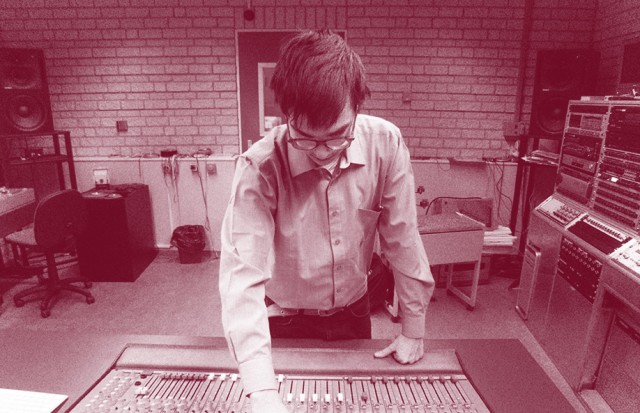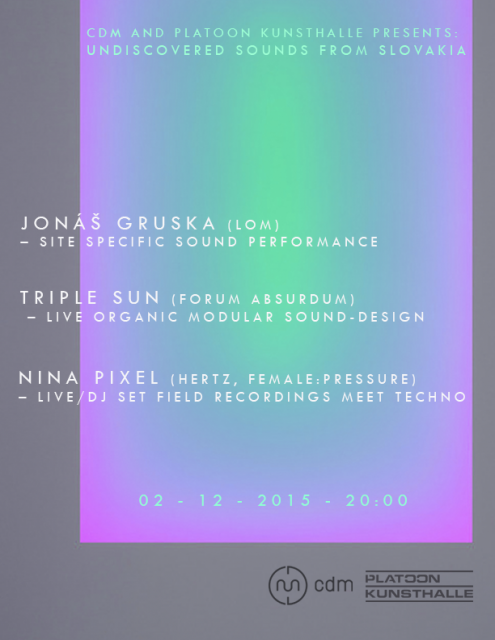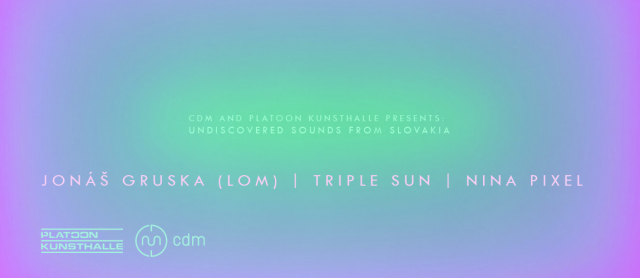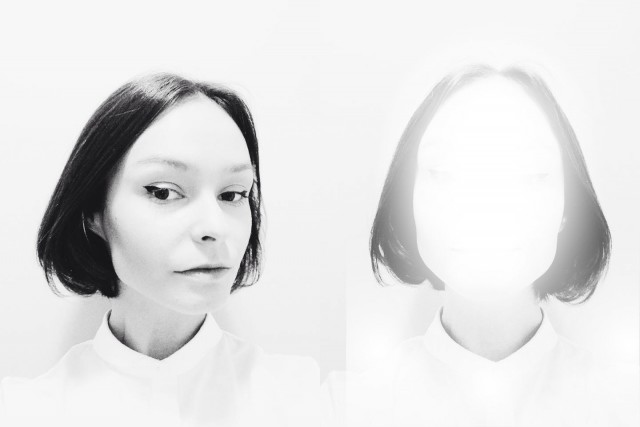He’s an artist who listens to bats, builds microphones (dubbed “ears”) designed to find the most delicate sounds possible, discovers unexpected beauty in the fiery breath of an oil refinery, and helps a label of unusual sounds.
So it’s our pleasure to invite Jonáš Gruska to Berlin next week, to present a concert (2.12) (with fellow Slovak-born artists Nina Pixel and Triple Sun), as well as an Elektrosluch-building workshop (1.12) for anyone who wants to both get soldering and hearing otherwise-inaudible electromagnetic utterances in their world. Both at are Platoon Kunsthalle, in the heart of Berlin. He will even transform its metal container walls into an instrument. We talk to Jonáš about his unique musical imagination:
Jonáš Gruska ≠ Sonic Close-Ups 14 from Gianmarco Del Re on Vimeo.
What is your approach as a sound artist? Do you listen and record for the experience of a concentrated listening itself, or for sharing sounds from your favorite places with others, or do you use your recordings in our musical projects as well? Or something else?
Over the years, I have discovered that there is no unifying way I like to do things. Sometimes I record for the sheer timbral quality of certain sounds, their rhythms or melodies; at other times, I use the field recording as a type of documentary work. As you mention, I also use my recordings in compositions, where I combine them with my own input (either synthetic of acoustic).
I have to say my favorite field recording of yours are Zvuky Slovnaftu – partly also because you are the only person among the angry sleepless crowd who found a certain beauty in all that mess, and also because of the nice, low frequencies of an industrial fire, merged with the soothing sounds of nature. How did you record this — which devices did you use?
For those who don’t know, Slovanft is a oil refinery based at the outskirts of Bratislava. It is known for foul smells and disturbing noises. One day, I heard these unusual, deep rhythmic noises coming from that area. These noise were heard even in the center of the city. Apparently, it was due to some unusual activity, causing huge flame bursts from the refinery’s flare stacks.
It was very much impromtpu recording session, I wanted to be sure that I catch the oportunity. Rode my bike there in the middle of the night, found a good spot and hit record.
The setup I used is a special foam block I made, fitted with two pairs of microphone capsules in parallel. The foam block arrangement is named SASS and it allows one to capture very realistic stereo image with omnidirectional microphones. I love the way it records quiet ambiances.
The recorder I used was a Sound Devices 702.
You mostly perform. How do your performances look (sound) like? And how do you choose places for site-specific performances?
Most of the time, the places choose me. I am asked by various curators and promoters to try and make something specific for their space. So far, it always worked out very well. I love the idea of creating my work to exact dimensions of space, its imperfections and resonances.
How will you approach the site-specific performance at Platoon Kunsthalle 2nd December?
My plan for Platoon is to try to make a composition/performance for the metallic walls surrounding the main concert hall. I will be using them as speakers, emitting sound from my custom made software, programed at spot.
You’ve founded the LOM label and you do mastering for many of the albums. Since the music varies a lot on these recordings, how do you choose and gather the right artists for the label — how would you define it?
We’re actually a small collective of people and we discuss releases together. Basically, we don’t limit our releases genre-wise, but we focus on the approaches musicians have towards making music. We love people who experiment, cross boundaries and don’t focus all that much on following certain hypes or predefined ways. There is also field recording edition “FIELDS,” which I curate on my own.
Recently, LOM also became a platform for creating new music software and hardware instruments. Who’s behind each of the instruments created?
At the moment, I am the sole designer of these, but there are some instruments in development by my colleague Anagakok Thoth (both hardware and software). At the moment all instrument sold are assembled by us or by robots.
Your microphones, Uši and Uši Pro (uši means “ears” in Slovak) are sold out. What do you think is the biggest reason they’ve got so popular?
It is hard to talk about your own product without sounding like a salesman, but I honestly love these for field recording. The reason is that they are very small, low-noise, and cheap enough. I am not afraid to experiment with these in various situations, drop them in unknown holes or put them in danger. This allows one to discover new recording techniques and methods for approaching the sound in untraditional way. But obviously, they can be used for regular recordings too.
There are new batches of these planned for next year.
How did the idea for Elektrosluch develop, and how was it designed?
I believe it started in 2011, when I saw a performances by Chris Galarreta and Daniel Davidovsky at Audio Art festival in Kraków, Poland. At that moment, I was working with sonification of wireless networks using various hacked tools. Both of these performers were using electromagnetic fields as parts of their performances. The idea got stuck in my head, and a year after that, I designed my own circuit. It was using old cassette tape heads as the sensor. This head was attached to a little preamplifier of my design and allowed me to experiment with the idea a little more.
Short after that, my friends asked me to build some of these for various artistic projects they had, and it slowly grew to an edition of around 25 devices. The construction was very “DIY” and unprofessional-looking, but it did the job.
With growing interest, I designed a second version and decided to crowd-fund it through Indiegogo. The campaign was successful — I raised twice the amount of the funding required. Amongst the people who ordered it I even found Alessandro Cortini. There were around 200 units sold, worldwide.
Last year, I started working on version 3, which has recently sold out as well. Its casing was designed by a wonderful artist from the US named Birch Cooper, who I met during his tour through Bratislava. It’s the most advanced version so far.
You prepared a smaller version of Elektrosluch for our workshop December 1st at Platoon Kunsthalle. What’s the difference between Elektrosluch 3 and Elektrosluch Mini?
The main difference is the lack of casing and the external input. Otherwise, the circuit is identical.
What are your 3 favorite field recording devices / microphones?
Currently it’s the Uši microphones (of course), Sound Devices 702, and my ultrasonic bat detector.
More:
https://zvukolom.org/
http://jonasgru.sk/
If you’re near Berlin, don’t miss our event.
First, there’s a special workshop to build your own Elektrosluch mini. Register here – spots are very limited. You get one instrument to call your own, plus instruction (beginners welcome):
DIY Elektrosluch Mini Workshop
Second, we have a concert featuring Jonáš alongside Triple Sun and Nina Pixel:
Triple Sun – Sprint from Martin Blažíček on Vimeo.
https://soundcloud.com/nina-pixel
RSVP on Facebook:
CDM and PLATOON present “Undiscovered Sounds From Slovakia”: Jonáš Gruska, Triple Sun, Nina Pixel
or on Resident Advisor (see, show them you don’t only listen to four on the floor).



